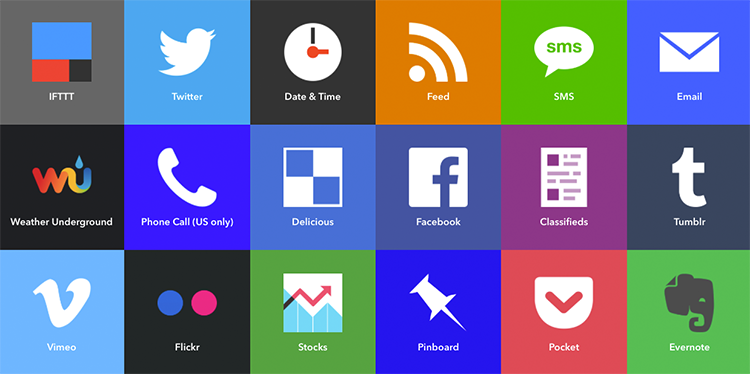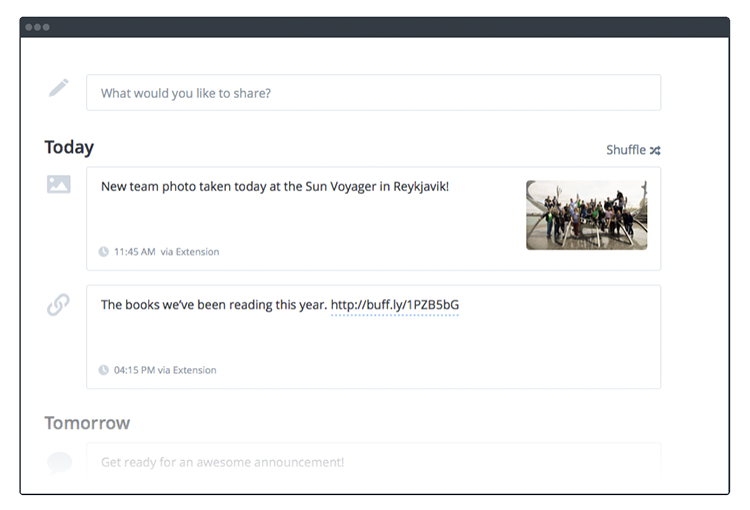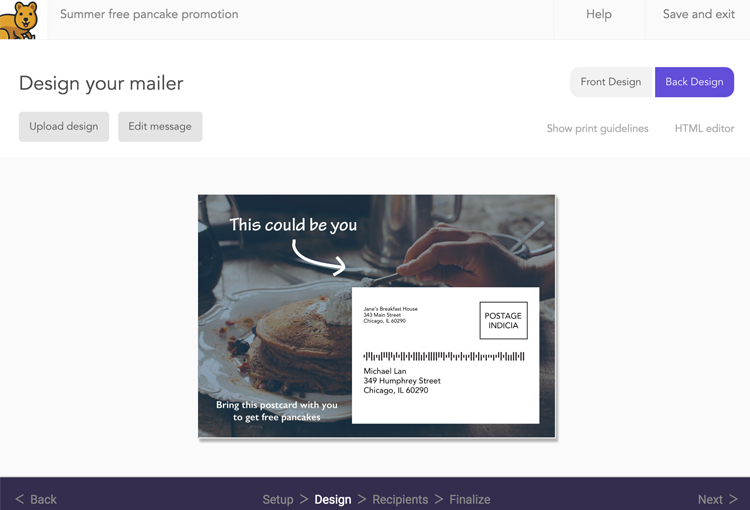If you’re running an eCommerce business, you know that your marketing needs to go beyond creating awareness through a single channel like Adwords. You need an ongoing, multivariate approach across many mediums if you want to constantly improve your ROI.
But as an eCommerce entrepreneur, how can you test the effectiveness of different approaches when you’re limited on time and resources?
The secret is smart automation.
Using automation will help you:
- Test the maximum number of approaches,
- Find the best results, and
- Scale your marketing efforts without requiring additional resources.
Thankfully, there are a growing number of tools that let you automate your eCommerce marketing simply and effectively.
Here are some of the best tools for eCommerce marketing automation that you can start using today. From email to snail mail, these tools will let you put your marketing on autopilot.
If This Then That (IFTTT) – App Automation
IFTTT lets you automate actions between an extensive suite of software and websites like Dropbox, Gmail, Instagram, and Mailchimp. By setting up conditions, you can create powerful automation without any coding required.
What’s great about IFTTT (aside from being free) is that it works with almost every service you could need from Evernote to your GE Dishwasher.
Source: IFTTT
From a marketing and productivity perspective, it can become an indispensable tool for managing social media in particular.
For example, you can create a basic Twitter rule that archives every tweet from a certain event into a spreadsheet for later analysis. You can even create a recipe to auto-post your Instagram photos to Twitter or Facebook based on certain conditions like when a specific hashtag is used. Moreover, these recipes are easily customized – make them as simple or as complex as you’d like.
IFTTT is most useful for actions you find yourself repeating often and for aggregating data based on certain conditions. For inspiration, check out their marketing collection which has a whole list of IFTTT recipes useful for social media. Or read Dana Forman’s post on Seer Interactive’s blog, which features a fantastic recipe list for almost every marketing need.
Zapier – App Automation
IFTTT is great for simple automation, but if you really want to turn your eCommerce marketing into an automated powerhouse, you’ll need to look at a tool like Zapier.
Like IFTTT, you can use Zapier to create simple, conditional-based rules between different web apps. For example, you can create a “Zap” to save all of your new MailChimp subscribers to a Google Sheet.
But Zapier also has premium Zaps that link with services like FacebookAds and even platforms like Shopify. This allows you to automatically sync customers and orders from your eCommerce platform into your CRM. Consolidating your marketing efforts with the premium Zaps can save you hours every week.
You can also use the explore section for inspiration and discover Zaps that automate services you already use If you want to learn more, check out Shopify’s how-to article on using Zapify to streamline your business.
Buffer – Social Media Scheduling
Conditional automation tools like Zapier and IFTTT are fantastic time savers that will help you scale your marketing and find more hours in the day by reducing redundant tasks. But to make sure your social media marketing is effective as well as automated, you need to look at a tool like Buffer.
Buffer is a social media scheduling tool that lets you create and schedule your posts across multiple social media channels. This allows you to spend the time researching and curating the best content to share, queue it up in advance and then share it across all of your social media accounts at the optimal time.
You no longer need to switch into social media mode multiple times a day. Instead, you’re free to focus on using social media to have actual conversations with customers.
Auto-posting tools like Buffer:
- Allow you to schedule your social media efforts – creating more regular engagement,
- Help you plan a consistent strategy, and
- Stop you from spontaneous posts that are neither effective nor engaging.
Source: Buffer
Shoelace – Visitor Retargeting
Retargeting people who have previously visited your site is an incredibly effective form of online marketing, particularly for eCommerce stores. But with a large number of SKU’s, it’s time-consuming to create and optimize retargeting ads with effective incentives.
For Shopify users, the Shoelace app puts your retargeting ads on autopilot. It monitors your campaigns and provides tips on how to improve their performance – ensuring that they’re optimized for conversions.
Shoelace doesn’t just create one-off ads, though, they also create journeys.
Rather than displaying one ad that promotes your product directly, journeys show a series of follow-up ads in a user’s Facebook timeline each day. It is similar to drip campaigns in email marketing where you slowly talk about the problem your product solves before introducing it as the hail-mary solution.
Journey’s step-by-step approach is incredibly effective, but it would be much more resource intensive without automation. It takes Amy Porterfield’s advice to use Promoted Posts with fans who “already know you, trust you, and want to engage with you” and updates it to build brand loyalty and, ideally, the sale.
Mailjoy & Lob – Direct Mail Automation
Social media has such a low barrier to entry that we often forget about more traditional marketing methods like mailouts. This is also due to how difficult mailouts and postcards can be to scale, especially considering how distributed your audience might be as an eCommerce business.
Mailjoy, an eCommerce marketing tool for direct mail automation, looks to change this. You can easily create mailouts for people in a certain location or target a group of people at specific addresses. Surprise your new customers with a thoughtful postcard or make sure they hear about your upcoming sale – without having to spend a minimum on printing.
For developers, Lob is a similar mailout service which also has an API, allowing you to programmatically create and send letters, postcards, and mailouts. Still stuck on how to use it? Their blog recommends clear and simple ways to adapt direct mail automation for your marketing operation.
Far from being an antiquated strategy, it’s clear that direct mail automation is a must-have tool for digital marketers.
Source: Mailjoy
Customer.io – Customer Lifecycle Tracking
As an eCommerce store, you have a significant advantage over retail competitors in the amount of data you can collect, both:
- Passively as your customers are browsing your products, and
- Actively as they purchase and communicate with you.
Customer.io collates all of this data for you and, using a similar approach to IFTTT, lets you set conditional arguments to segment users.
For example, if a customer has logged in 50 times, you might segment them into a ‘regular users’ group. You can then create campaigns and triggered emails tailored to this segment. Much easier to set up than a manual approach to segmented marketing and much, much more effective than a blanket approach of talking to all of your customers in the same way.
Rest assured, if you’re not constantly looking at ways to use automation to scale your business and increase your marketing ROI, your competitors are. These are the best marketing automation tools for eCommerce to help you scale your business today.
Know of some great ones we didn’t mention? Let us know in the comments below!
If you want to learn how Pixc can help you automate your product photography, send us a message and we’d be glad to get you on the right track.











